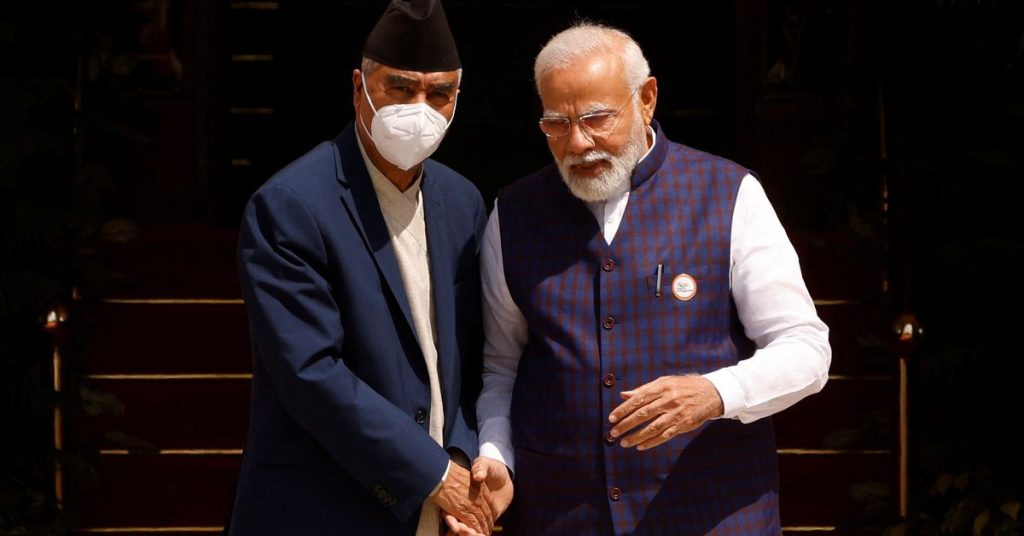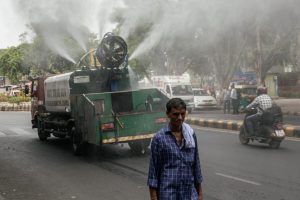Not just buffer state, Nepal key to India’s energy security

By Shubham Kumar
New Delhi, September 16: While geographical proximity lends an inescapable matrix to bilateral relations, interactions are routinely marked by transmissions that encompass societal and cultural connections. Indo-Nepal relations are true embodiments of such multifaceted associations.
Prime Minister Modi, in his visit to Nepal in 2022 asserted that India-Nepal friendship can be beneficial to the entire humanity. He was asserting that Indo-Nepal ties are on roads to a deepened and diversified coordination in times to come.
‘Roti-Beti ka Rishta’, which is used to highlight the special relationship of both countries, is multi-layered and perhaps dynamism has only swelled. Geo-strategic calculations, in light of Sino-American fissures, add an unprecedented chapter into the mix.
Nepal can emerge out of being a mere buffer state between two rising powers. It has a central role in enhancing the integration of the region. Comprehensive cooperations on strategic affairs, including energy security, can drive Nepal’s interactions with India in near future.

India and Nepal share 1850 km long border. The Treaty of Peace and Friendship in 1950, sought by Nepalese authorities, confers an unprecedented permeability to the borders. Culturally, Hindu pilgrimage and Buddhist linkages have defined the historic shared heritage.
Religious and tourist visits have dominated the popular imagination of Nepal in India. Cultural flows, however, are naturally profound and multi-layered.
Madhesis bordering Uttar Pradesh, and the significant Nepalese populace in Darjeeling and Sikkim, necessitate the establishment of peace and stability in Kathmandu. As a result of which, New Delhi would naturally seek a prolonged regime of socio-political stability in the neighbouring region.
The upsurge of militancy amongst aggrieved Madhesis compounds the security complications worrying Indian authorities who have routinely traced wanted terrorist on the other side of Indo-Nepal borders, not to mention the various spillovers of elongated instability in states bordering Nepal.
These security-centric outlook, nevertheless, traces its roots to colonial period and recent geo-strategic considerations have only solidified Nepal as a ‘buffer state’ between India and China.
Levi, a French Indologist, mentioned that Nepal marks the extreme limit where Chinese influence can reach at the height of its expansionism. This comment, made more than a century ago, attracts thinkers today as well. However, the colonial inheritance of linearly terming Nepal as merely the ’buffer state’ warrants a revamp.
Lipulekh Pass, along with other border disputes around Kalapani and Susta, coupled with rampant misuse of open borders are more immediate concerns for the region. India would hope that Nepalese domestic polity allows an amicable dispute resolution mechanism to emerge.
The elevated Chinese influence adds to India’s urgency in this regard. Intrusion of fake currency and terrorists mandate a mutual and comprehensive partnership between the security agencies of the two countries. The current institutionalised meeting of home secretaries, and Joint Working Groups, can be extended into an Intelligence sharing architecture between the two countries, would have the scope of emerging as an Asian manifest of ‘Five Eyes’ with inclusion of other like-minded countries.

Apart from Asia, India can also use Nepalese backing at international fora and regional and sub-regional groupings. These include United Nations, BBIN and SAARC for instance. Support from Kathmandu at these platforms on significant regional and international issues complement India’s attempts to comprehensively engage and integrate the neighbouring countries.
The pitch of ‘One World-One grid’ as envisioned alongside International Solar Alliance is vital in integrating the region on the lines of enhanced energy security, considering that Nepal is 105th signatory of ISA.
It has, furthermore, a hydropower potential of 80 GW. The realisation of this potential will not only reverse the Nepalese dependence on India’s grid, but it could enhance the energy availability to Indian states as well.
Projects in Nepal, like ‘Pancheshwar’ and versions of ‘Aruna’ symbolise concrete Indian states in this regard. Waterflow from Nepal has other consequences for India as well. Seasonal floods in North of Bihar occur primarily due to mammoth discharge of water and sediment load by Gandak, Kosi and other rivers flowing from Nepal.
While work on embankment of Kosi started way back in 1950s, embanking reflected a colonial remedy which has not proven to be ecologically sustainable. Delhi and Kathmandu have to invest significant research and material resources to devise contemporary mitigation plans.
Central to India’s aspirations vis-à-vis Nepal lies the desire of a common interconnected and interdependent economic space with varying access points functioning simultaneously. The realisation of such comprehensive vision cannot emerge from colonial or overused narratives.
For Delhi to gain and strengthen its influence in Nepal, it has to move ahead with the revamp of its outlook towards Nepal. From “Roti-Beti”, the relationship has to evolve in order to cater “Rozi-Roti” of the citizenry. Renewed economic ties and investments in Nepal would engage the rising and aspiring Nepalese middle-classes.
Nepal is placed crucially with two rising, and yet confronting nationalities, on its border. India would rightly hope that Kathmandu advances cooperation with Delhi to enable the mutual growth of region as envisioned above.
(Author is interning with Public Policy Research Centre)







